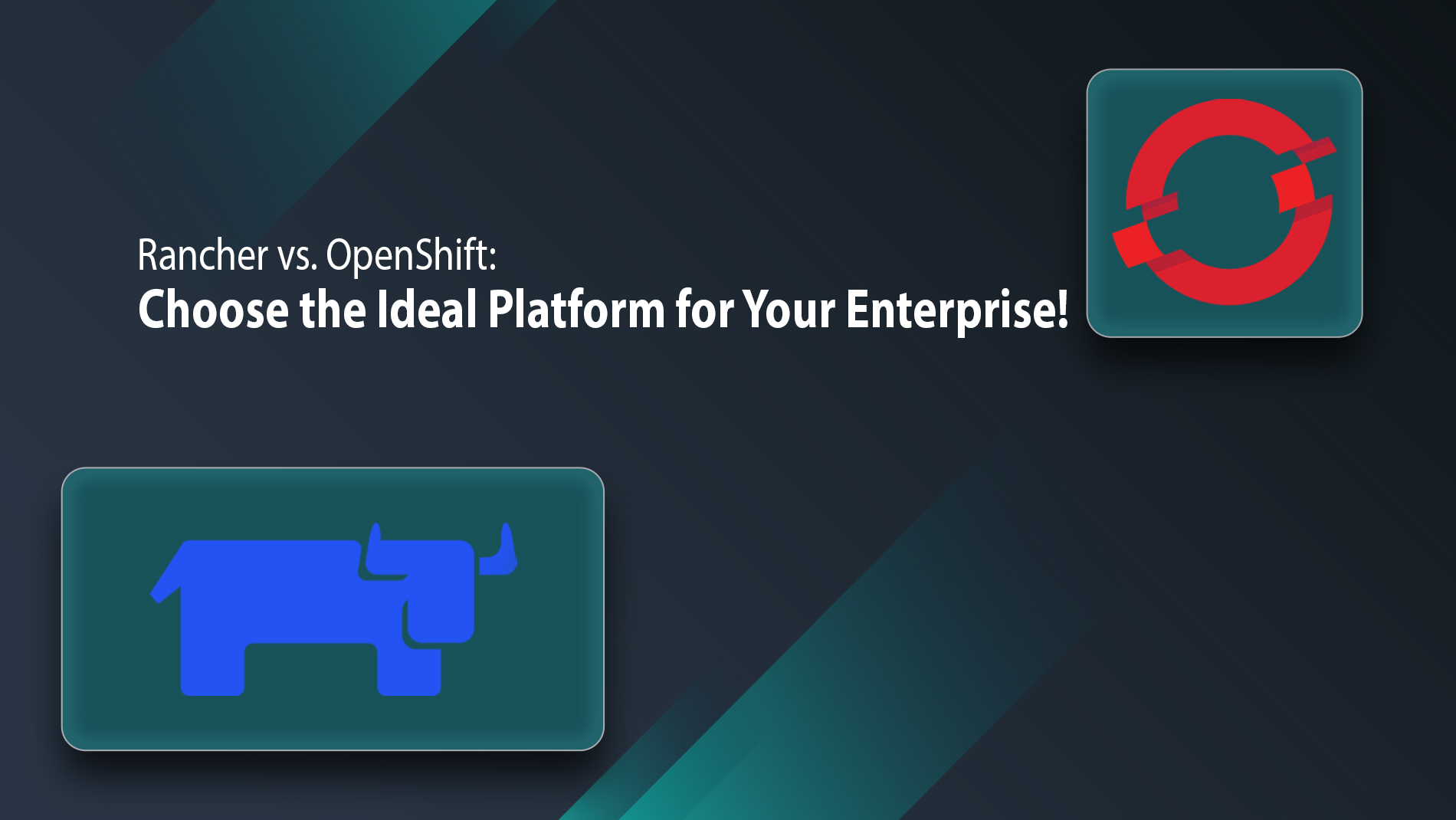 Let’s delve into the intricacies of Rancher Vs OpenShift. Here, we have discussed their features, capabilities, and performance to assist you in making informed decisions for your enterprise solutions.
Let’s delve into the intricacies of Rancher Vs OpenShift. Here, we have discussed their features, capabilities, and performance to assist you in making informed decisions for your enterprise solutions.
Rancher and OpenShift are Kubernetes cluster managers. They enable Kubernetes to be managed and used via a web console and CLI. Rancher can handle multiple Kubernetes clusters, but OpenShift requires the Advanced Cluster Management add-on to their maintenance plan.
There are numerous connections between the two products (Rancher Vs OpenShift) because they are container orchestration platforms closely associated with Kubernetes. Additionally, there are a few differences between the products. Therefore, based on your organization’s needs, choose the one that best fits your requirements.
So, in this blog, we will see a comparison between the two Kubernetes management tools in different categories.
Rancher
Rancher is an open-source container management tool that simplifies Kubernetes cluster deployment and management. It has three important products that integrate with Kubernetes: Rancher – a cluster manager, RKE – a Rancher Kubernetes Engine, and K3s. One of Rancher’s most important features is its capability to manage multiple Kubernetes clusters across various locations, regardless of whether they were initially created with Rancher or not. Therefore, you can import an existing Kubernetes cluster into Rancher and begin managing it through its interface.
OpenShift
OpenShift is a container application platform created by Red Hat that provides an advanced and scalable method of Kubernetes cluster management. It is an enterprise-level platform for automating containerized application deployment, scaling, and management.
OpenShift expands Kubernetes’ capabilities by providing an integrated development experience, built-in monitoring and logging tools, and a full set of security and compliance features.
A key difference between Rancher and OpenShift
-
Installation
Rancher installation process: Simple and user-friendly.
Installation time: It takes around 20 minutes to 2 hours.
Creating a new cluster is easy with a few basic commands and it can be easily deployed on an existing Kubernetes cluster or as a standalone Docker container with a single command.
OpenShift installation: Complicated than Rancher installation, as it requires the configuration of several components.
Installation time: It takes 3 days to weeks, sometimes more than a week.
-
Upgrades
Upgrading Rancher is simple and easy. Users can upgrade their Rancher installation with little downtime by following the instructions provided in the manual. Rancher’s support for rolling updates ensures that running apps are available during the upgrade process, reducing disruption to the organization’s services.
OpenShift upgrades include both the OpenShift software and the Kubernetes distribution.
It allows rolling updates and the platform complexity can make the upgrading process more difficult and time-consuming than Rancher. External clusters will require their own upgrade procedures.
-
Supported Operating System
Rancher runs on a standard operating system and it supports a wide range of OS, like Ubuntu, CentOS, RHEL, and SUSE Linux Enterprise Server. This allows user to choose the Operating systems based on their requirements.
OpenShift only supports CoreOS as the host operating system. The focus on a particular operating system allows easy integration with Red Hat’s ecosystem, although it could be restrictive for certain users.
-
Open Source Software
Rancher, RKE, and K3s are all the same, regardless of whether you have a SUSE subscription. You do not require a support membership to use any of the Rancher products.
A subscription is required to use OpenShift and many of Red Hat’s products are based on upstream open-source projects. OpenShift has been reported to favor its non-CNCF tools and procedures during onboarding.
-
Ecosystem and Maturity
Rancher’s ecosystem is expanding, although it may not boast as many integrations or partnerships as OpenShift. Nevertheless, Rancher’s open-source nature and supportive community contribute to an ecosystem that continuously grows to meet user demands.
Red Hat provides full support for OpenShift and it integrates easily with their infrastructure. OpenShift has a well-established ecosystem that includes various integrations, partnerships, and third-party tools. This ecosystem simplifies platform adoption and extension because users can easily find the solutions to their requirements.
SUSE Rancher and Red Hat OpenShift make Kubernetes cluster management easier and both offer professional Support for their Products Rancher is a Kubernetes cluster manager and it manages any CNCF-certified Kubernetes clusters. If you wish to centrally manage several clusters or if you are not fond of RHEL, then Rancher is the best option. OpenShift is also a CNCF-certified Kubernetes Cluster, however, Red Hat has made specific decisions regarding its components. If you prefer operating within the Red Hat ecosystem, then choosing OpenShift is a wise decision.
If you are still unsure about what to choose, you can install and test both Rancher and OpenShift on a single machine, as they offer versions. Hope the differentiation between Rancher vs OpenShift helps you make an informed decision.
To get more updates you can follow us on Facebook, Twitter, LinkedIn
